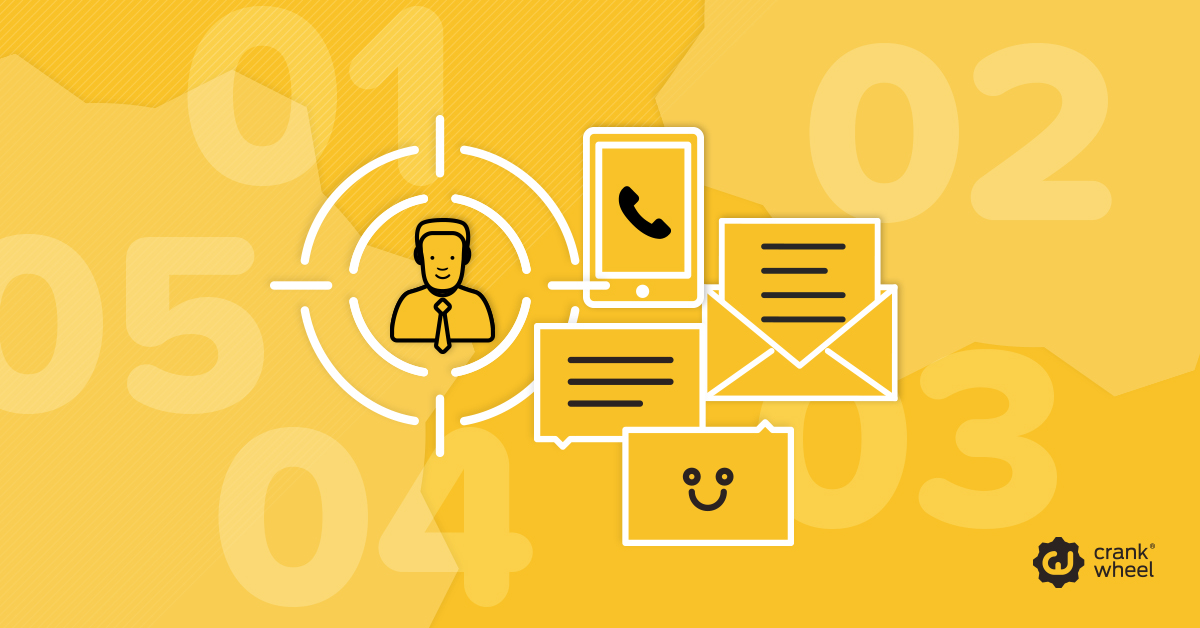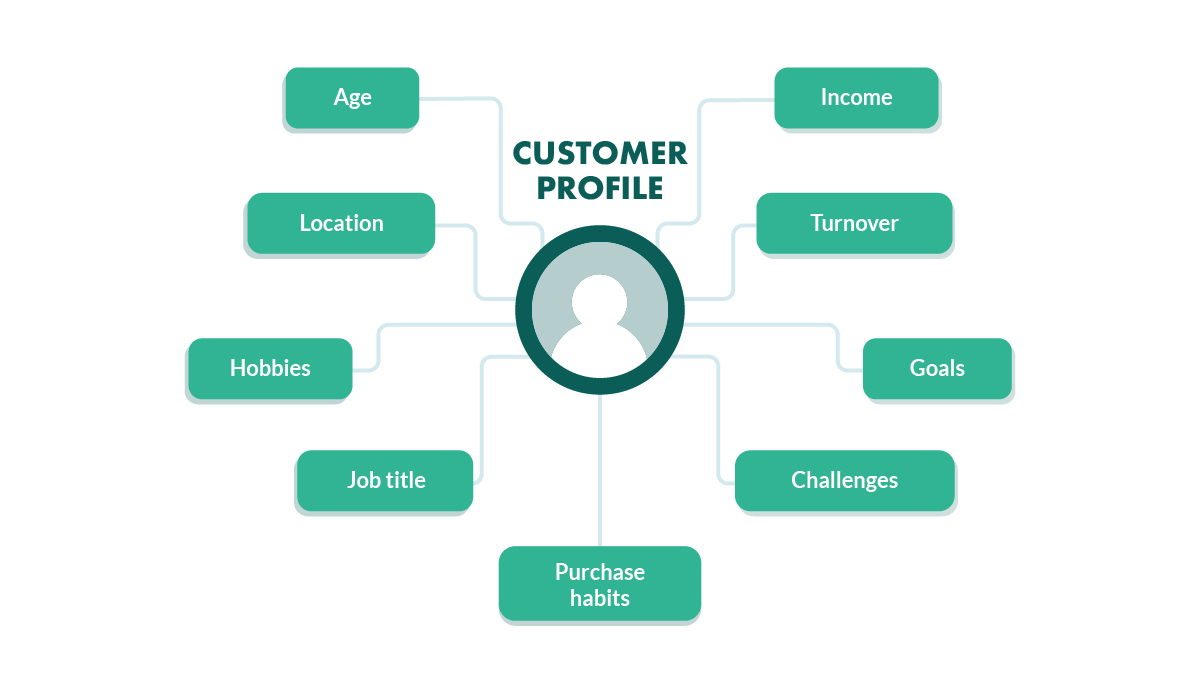Everything You Need to Know About Outbound Lead Generation
Every business, whether large or small, shares two common goals. These are to reach new customers and to make sales. It goes without saying, but every business that fails to meet these goals will fold. Luckily, in today’s technological world, there are more ways of reaching individual customers than ever before.
With the cutting-edge analytics software, we can send highly personalized marketing materials to our audience. This increases engagement and produces sales. Yet new technologies are only useful if we are reaching the right kind of customer. You could be wasting a large amount of money advertising to people that have no interest in your product or service.

Happily, there is a strategy for avoiding this issue. It’s called outbound lead generation.
1. Know your Ideal Customer Profile
2. What is Outbound Lead Generation?
a: Marketing Qualified Leads
b: Sales Qualified Leads
3. Examples of Outbound Lead Generation
4. Inbound or Outbound: Which Should You Use?
5. Steps in the Outbound Lead Process
a: Identify Your Target Audience
b: Set Goals
c: Begin Lead Generation
d: Contact Prospects
6. The Stages of a Sale
7. Remember to Personalize
8. Don’t Overlook Outbound Lead Generation
Know Your Ideal Customer Profile
Before we can properly explain outbound lead generation, we need to discuss the Ideal Customer Profile (ICP). Knowing your ICP is vital to the success of your business. As the name suggests, an ICP is an imaginary description of the sort of client that is likely to benefit from your services and return the highest value.
If you are yet to create an Ideal Customer Profile, here are some elements that you should be sure to include:
- Budget – Identify a customer’s cost threshold – what are they willing, or able, to pay for your product or service?
- Geographic Location – Where is your client located? Are there certain areas that are more likely to respond to your product, or vice-versa?
- Legal Restrictions – Is there legislation that you need to bear in mind that will limit your customer base?
Whilst the above examples make up the core of your ICP, there are many other factors to consider in how to ensure that your team is focusing on the right prospects.
What is Outbound Lead Generation?
When searching for potential customers, it’s important that a business can filter more valuable leads. Outbound lead generation helps to accomplish this. Your ICP is a central part of this process.
An outbound lead is a stranger that falls within your ICP but is not aware of your business or the products and/or services that you provide. For a stranger to be classed as an outbound lead, you must first gather information from them. This information is valuable – enabling you to target leads for future sales.
Outbound lead generation is any activity that generates the outbound leads that your business can interact with.
The Different Types of Outbound Leads
There are two principal types of outbound leads. These are marketing qualified leads (MQL) and sales qualified leads (SQL).
Marketing Qualified Leads
This describes a lead that has displayed some interest in your marketing. In some way, they have made a first step towards making a purchase. This could be through adding items to their online shopping cart, downloading marketing materials, or interacting positively with a sales representative.
The challenge when dealing with an MQL is moving them from a position of uncertainty to a position where they can make a sales conversion. These leads can be nurtured through marketing materials and sales pitches, and have a much higher chance of resulting in a sale.
Sales Qualified Leads
The second category of lead involves an MQL that has been successfully nurtured by the sales team. They are then assigned a sales representative so that the lead can become an active customer.
An SQL has been thoroughly researched by both the sales and marketing teams. This means that your business has a much greater understanding of them as potential customers.
To determine whether a lead is an MQL or SQL, you need to consider their readiness to complete a sale. The more valuable actions a customer takes (filling out a form, repeated visits to your website, etc.) the closer they are to becoming an SQL.
Examples of Outbound Lead Generation
Outbound Lead Generation takes many forms, some digital and some traditional. These include:
- Radio and television adverts
- Billboards, flyers, and leaflets
- Cold calling
- Cold texting
- Mass emails
- Digital adverts
- Emailing individual prospects
It’s fair to say that some forms of outbound lead generation, such as cold calling, have developed a poor reputation in recent years. Too often, the whole strategy is, therefore, seen as outdated.
These preconceptions, don’t, however, tell the full story. Outbound lead generation can be effective. But do you have to choose between inbound and outbound?
Inbound or Outbound: Which Should You Use?
You may have already heard of inbound lead generation - one of the most popular forms of attracting new customers. Unlike outbound, inbound lead generation attempts to persuade customers to interact with your brand through their own volition.
To do this, a business will use enticing forms of media. This could include blogs, videos, or social media content. If you’re attempting to attract customers with content, you need to make sure that you provide a smooth user experience. Be sure to take the necessary steps to achieve this. For example, if you are designing an app, ensure that you deploy quality assurance strategies.
With outbound lead generation, your business will have to take on a much more hands-on approach. This means directly interacting with customers through sales representatives, emails, or events.
There are numerous advantages to inbound lead generation. Inbound leads are more efficient, as customers come directly to you; there is no additional effort required.
But with marketers reporting lead generation as a top priority, according to Hubspot, which option should your business choose? The simple answer is that there is no best choice. If a business is to succeed, it should deploy both inbound and outbound methods. If you’re only focusing your resources towards one method of lead generation, you will inevitably generate fewer leads.
Together, inbound and outbound lead generation can help power your campaigns and boost your strategies.
Steps in the Outbound Lead Process
There are various steps to bear in mind in the outbound lead generation process. Don’t forget the most important factor when planning your process; to engage prospects so that they can be converted into active customers.
It’s important to note that the different steps will vary from company to company. Outlined below are basic steps to consider when planning your outbound lead generation.
1. Identify Your Target Audience
It’s vital that you are attempting to sell to the right people, otherwise, you are wasting time and resources. Take the appropriate time to identify your target audience (TA) by asking some key questions:
- What is my Ideal Customer Profile?
- What are the demographics of my audience?
- What are some of the common behaviors of my customers?
- What audience do my competitors attract?
Once you have defined your TA, you can begin the process of segmentation. This involves dividing your TA into small groups. You can segment based on demographic, psychographic, behavior, or interest. With your audience segmented, you can better target individual prospects with products that they’re likely to respond to.
2. Set Goals
Once clear goals are established you can begin setting Key Performance Indicators (KPIs). If you’re unfamiliar with the term, KPIs are a method for measuring a business’ progress in working towards a specific objective. Here are some examples of metrics that can form your KPIs:
- Conversion Rate – The number of conversions (when a prospect completes a desired action) divided by the total number of visitors.
- Return on Investment – The return of an investment is divided by the cost of an investment.
- Return Rate – Returned leads are divided by the total number of delivered leads.
- Revenue Per Lead – The revenue received from leads is divided by the number of delivered leads.
- Customer Lifetime Value – The total revenue from a customer over the life of the relationship, divided by the costs incurred by the business.
Your sales goals should guide your outbound lead generation. You should constantly review your strategies to make sure that they are in line with your goals.
3. Begin Lead Generation
With the target audience identified and your goals outlined, you can start the process of lead generation in earnest.
To do this, you must first compile a list of prospects that match your ICP. This list should include a person’s contact information. Don’t worry if you’re unsure about the best way to gather a list of prospects. There are multiple approaches that you can take.
For example, you could create a newsletter for people to sign up to. This gives you access to the contact details of your customers. Alongside other factors, such as a strong remote support team, a newsletter can also be an excellent way of building relationships.
Other methods include creating a blog, telephone marketing, and cold calling. Another option is to buy lead lists, although it’s cheaper and more effective to acquire them yourself.
4. Contact Prospects
With a list of leads, your sales team can begin contacting prospects. This can be done through a variety of methods. Some options are more effective than others. For example, cold calling is an approach that is often looked upon with scorn by consumers.
Your team will then need to carry out lead qualification. This is the process of deciding which customers are likely to purchase a product. These leads are referred to as ‘qualified’. Leads that are unlikely to make a purchase are known as ‘unqualified’. By focusing your resources on qualified leads, you are much more likely to meet your goals.
The Stages of a Sale
By using a sales funnel, you can track a lead’s progress towards making a sale. When planning your outbound lead generation, the importance of a sales funnel cannot be overlooked. The different stages of sales include:
- Awareness – A lead has a problem, but they are unaware of how your product or service can help them. During this stage, it is your goal to make a prospect aware of your product.
- Discovery – A lead has been made aware of your brand. You now need to provide them with more information about what you are offering.
- Evaluation – A lead now has a good understanding of your product or service, and how it can be useful to them. You should continue to provide information.
- Intent – Whilst a prospect could be interested in making a purchase, they may be comparing your product with your competitors. Here, your task is to persuade a lead that your product is superior.
- Purchase – A lead has made a purchase. The challenge is now retaining a customer so that they make future purchases. To increase satisfaction, make sure you have protocols in place to allow for quick delivery, if appropriate for your business model. Some online retail platforms, for instance, include features to ensure a smooth ordering process, one example being Shopify fulfillment.
Remember to Personalize
People like personalization. In fact, 91% of consumers say they are more likely to shop with brands that provide offers and recommendations that are relevant to them. When working on your lead generation, make sure that you personalize.
To do this, you need to gather a large amount of information about your prospect. This should include information such as buying behaviors, interests, and individual habits. The information collected will help you to create more impactful marketing materials. All of this helps to increase customer engagement.
Although time-consuming, the benefits of personalization are high. If you understand your consumer, you are much more likely to appeal to them with your marketing.
Don’t Overlook Outbound Lead Generation
Despite its occasional poor reputation, outbound lead generation has an important role to play for businesses. If you’re keen to generate new customers (and if you’re a business owner, you should be) outbound lead generation is necessary.
Of course, this strategy alone is not enough. It should form part of a wider marketing plan which includes inbound lead generation, too. Together, these two strategies have the potential to take your business to the next level.
If you want to generate new customers, don’t overlook the importance of outbound lead generation
About the author
Jenna Bunnell is the Senior Manager for Content Marketing at Dialpad, an AI-incorporated cloud-hosted contact center workforce management and unified communications system that provides valuable call details for business owners and sales representatives. She is driven and passionate about communicating a brand’s design sensibility and visualizing how content can be presented in creative and comprehensive ways.






